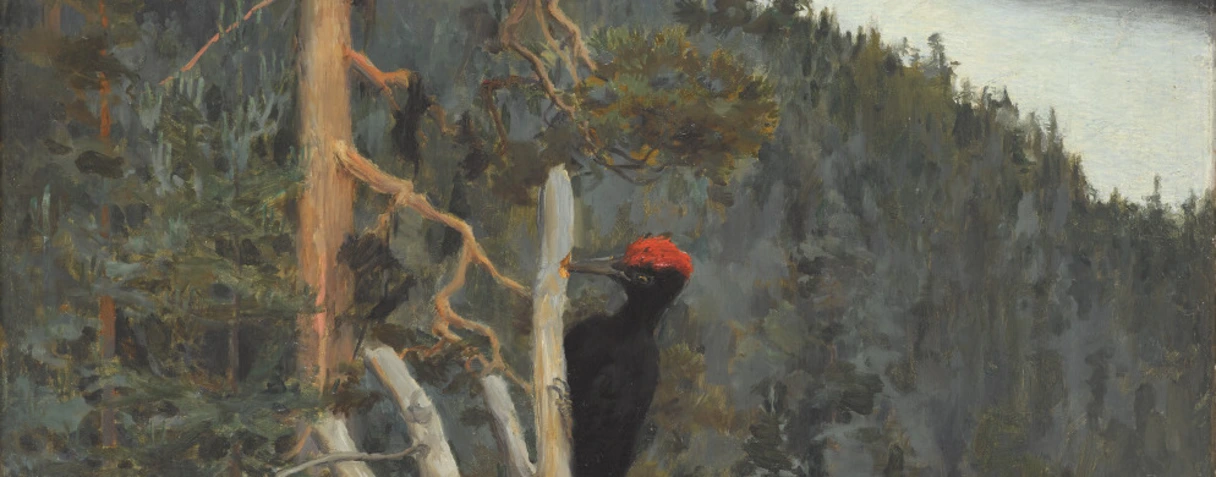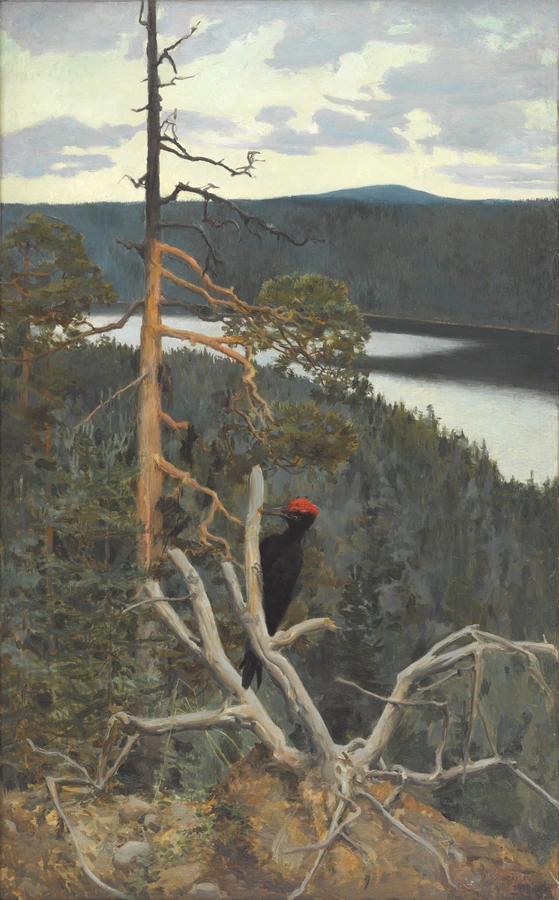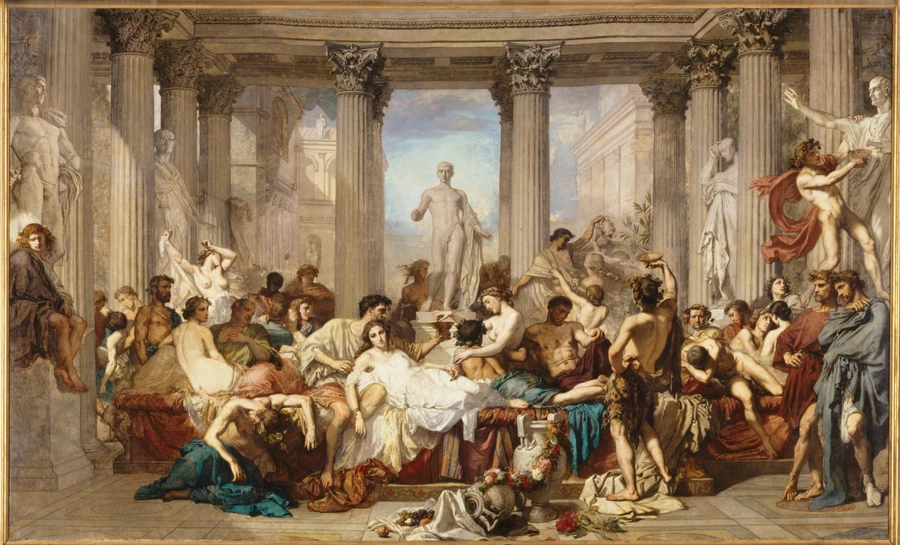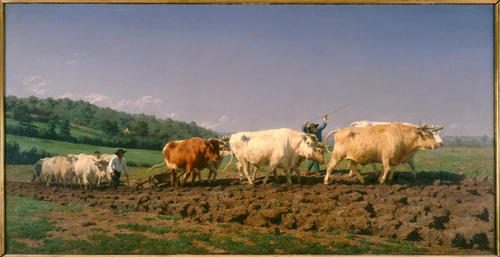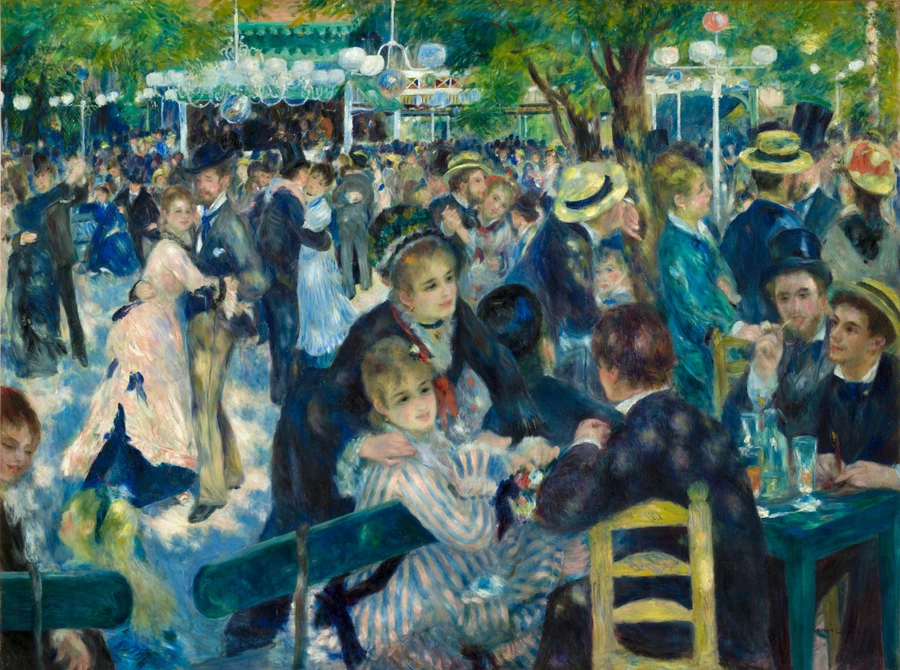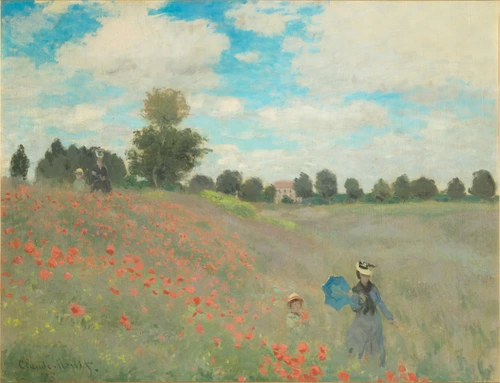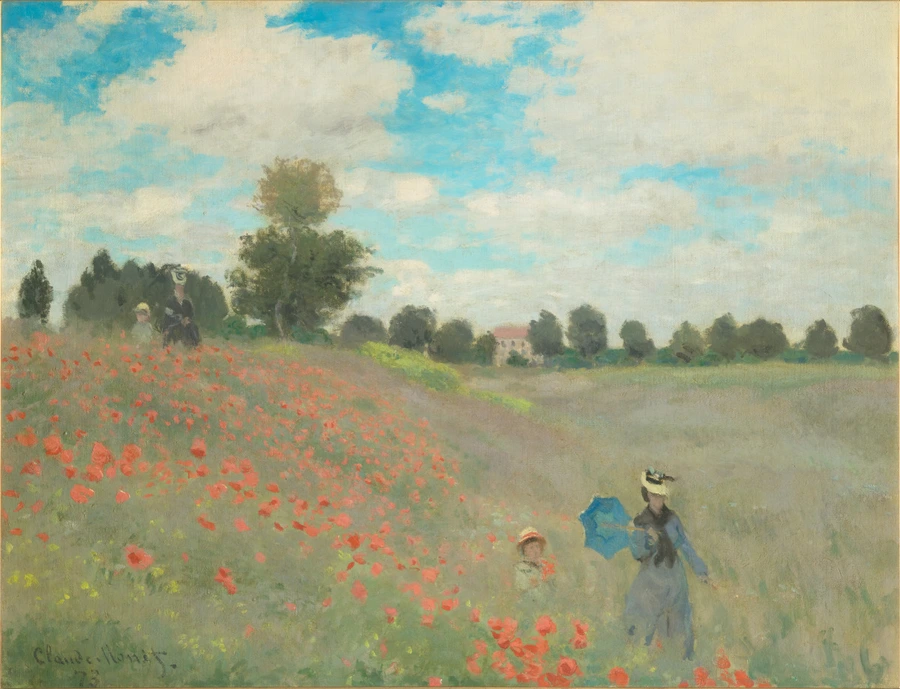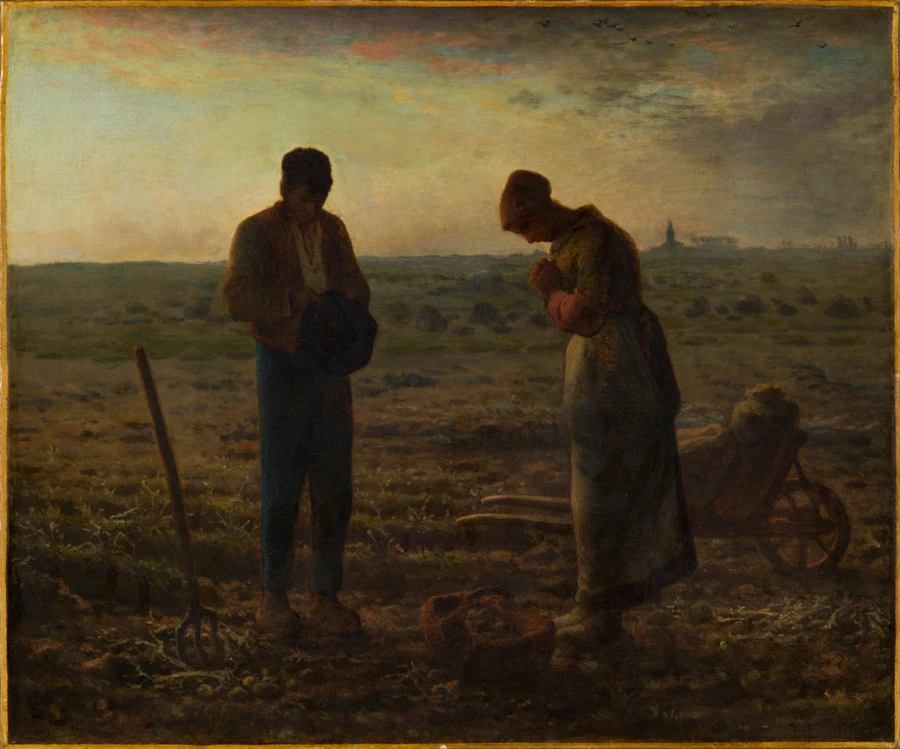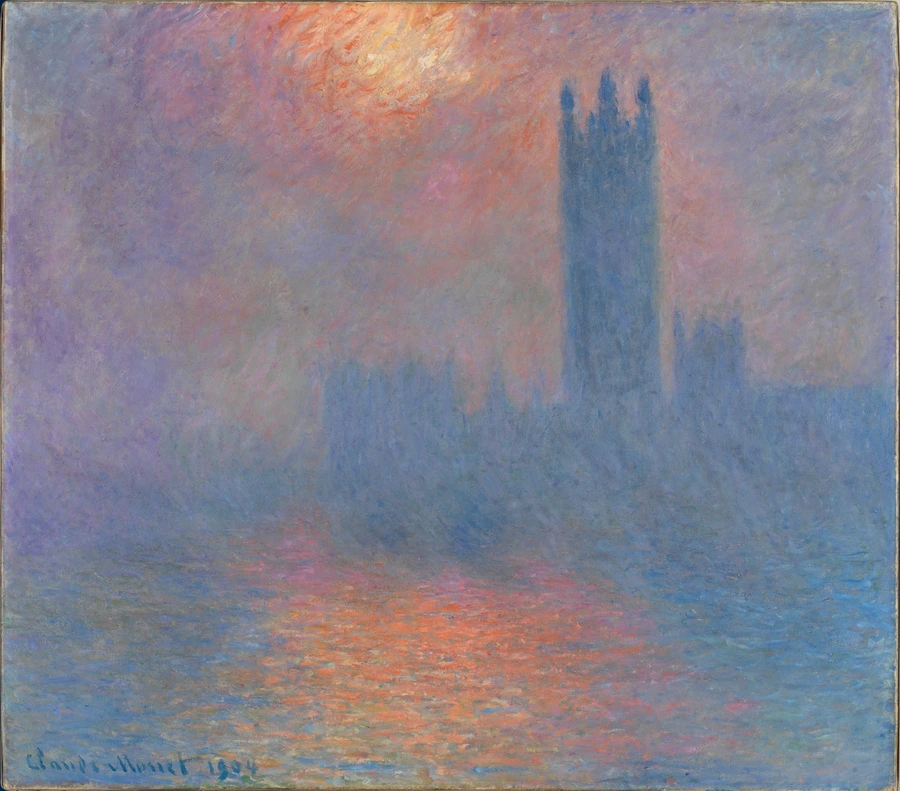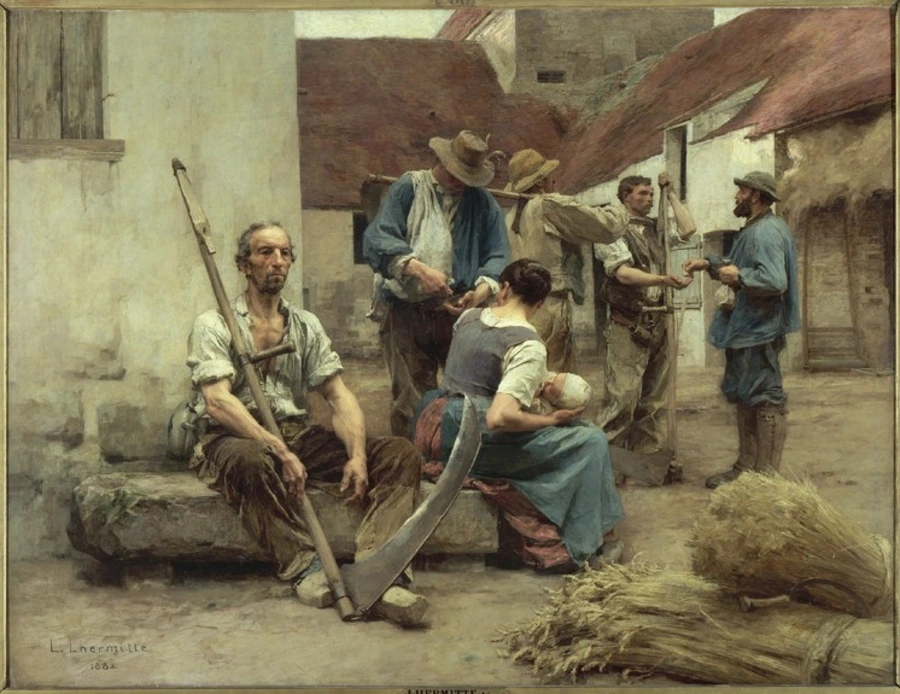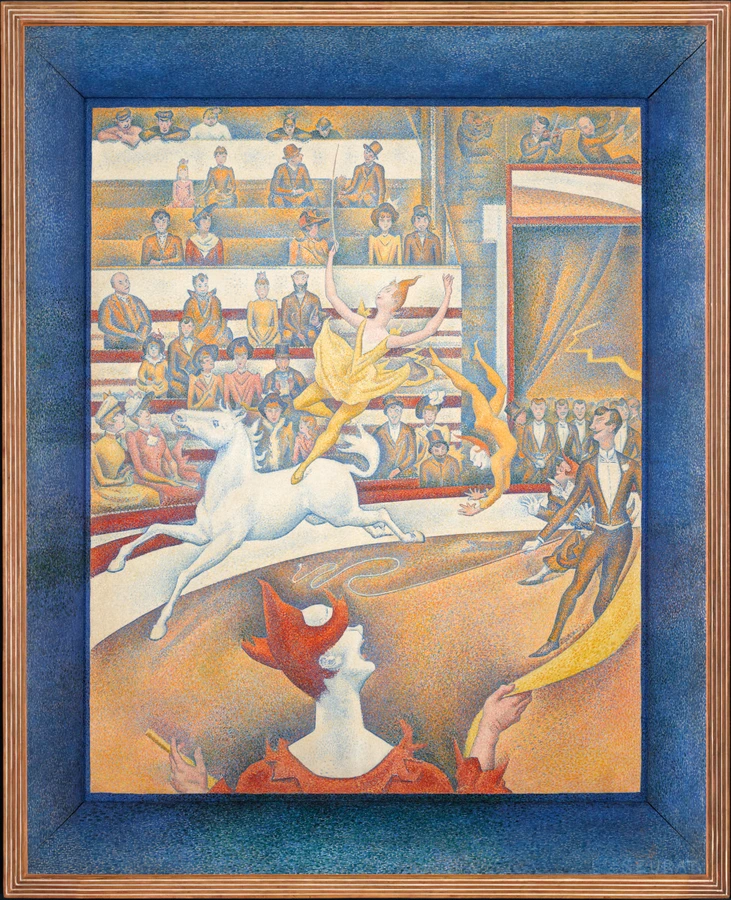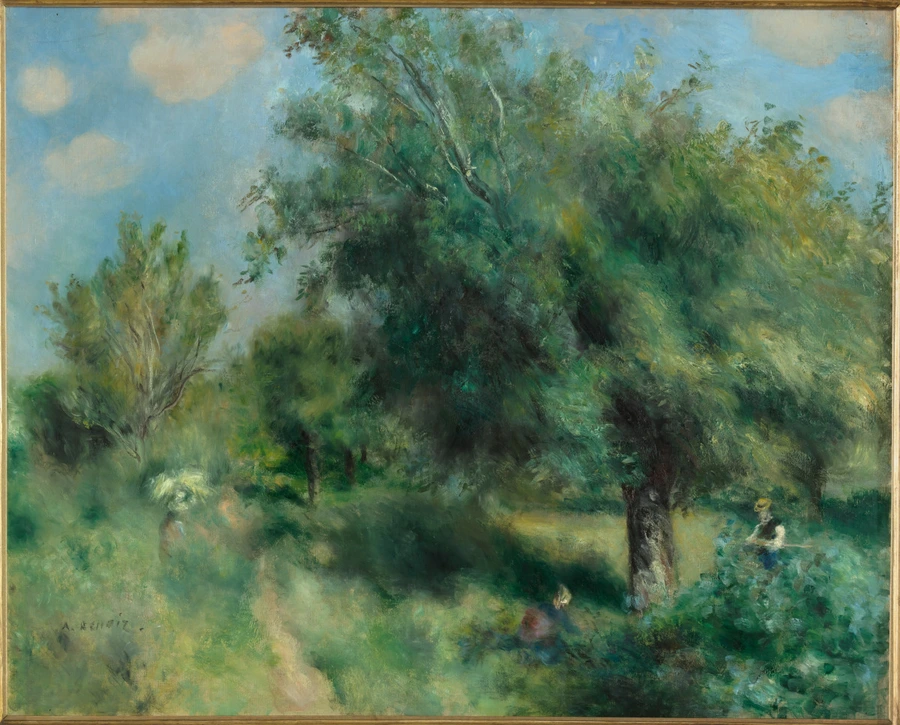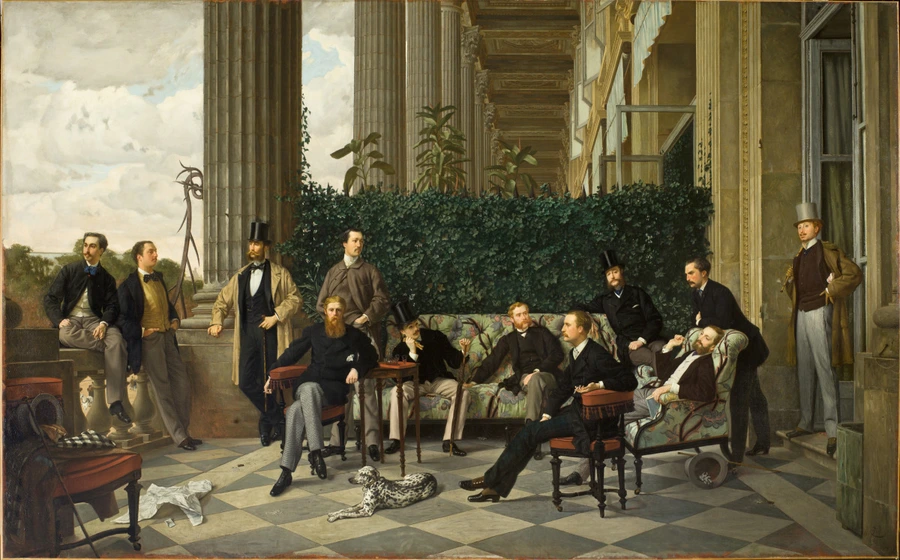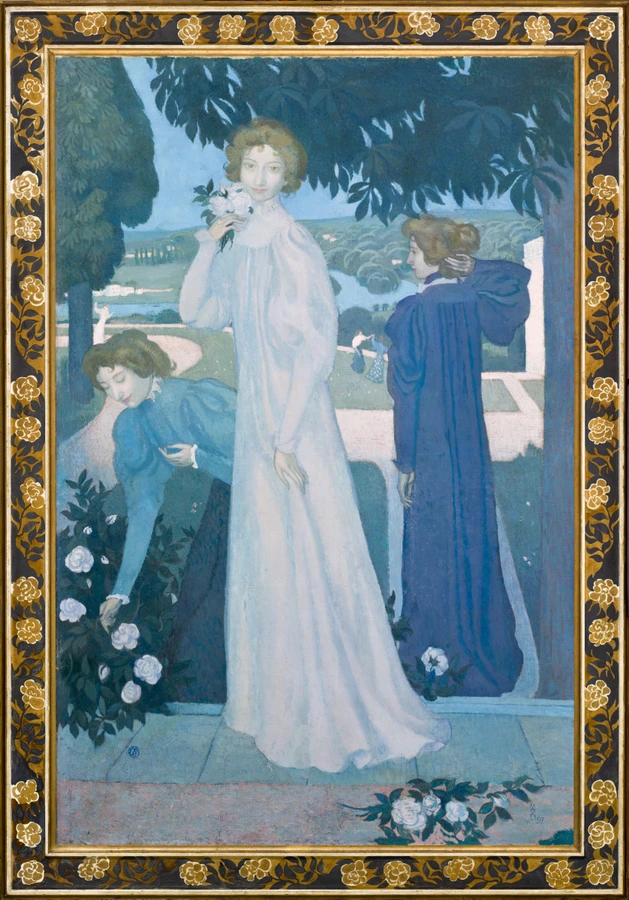A rich, complex legacy
The Musée d’Orsay’s paintings collection comes from the museums that preceded it from the early 19th century onwards: the Musée du Luxembourg, created in 1818 and dedicated to works by French living artists; the Jeu de Paume, in the Tuileries Gardens, where works by contemporary artists from foreign schools, acquired on behalf of the Musée du Luxembourg, were exhibited from 1922 onwards; the Louvre, which exhibited works by major artists of the 19th century that joined the collections at a later date, and where Impressionist rooms were added in 1929; the Musée national d’art moderne, opened at the Palais de Tokyo in 1937; the Jeu de Paume, converted in 1947 into a space to present the Musée du Louvre’s collection of Impressionist paintings and Post-Impressionist works acquired on behalf of the Louvre.
Apart from the Louvre, of course, these establishments have either disappeared or been allocated a different mission (the Musée du Luxembourg, founded in 1818, for example, was closed in 1939, never to reopen).
The oldest part of the Orsay collection comprises the works acquired by the Musée du Luxembourg. When it was founded, in 1818, the museum was quite a trailblazer, as instead of exhibiting ancient artworks - the role traditionally assigned to museums at the time - it showed works by living French artists. Works that were well received by critics at the Salon were selected by the State to be presented at the Musée du Luxembourg. Some works were commissioned, others bought with money from the Civil List. There was an unwritten - and very randomly applied - rule providing for artists exhibited at the Musée du Luxembourg to take their place in the Louvre ten years after their death, if they had achieved full recognition.
Acquisitions on behalf of the Musée du Luxembourg, an integral part of the official Fine Arts system
The constitution of the Musée du Luxembourg’s collection formed therefore an integral part of the official Fine Arts system of the 19th century. Pupils of Ingres, a recognized master, were well-liked: a painting by Théodore Chassériau, Le Tepidarium , was purchased in 1853. At the Salon, academic tradition was closely followed, but renewed itself in order to keep up with the times. A painting by Thomas Couture, Les Romains de la Décadence [The Romans in Their Decadence], commissioned by the state in 1846, was acquired in 1847 after being shown at the Salon. In it can be seen a solution to the conflict between Classicism and Romanticism. History painting, in the “grand style”, which drew its subjects from ancient history in particular - even if Couture’s picture actually refers to what he saw as the moral decadence of his time -, Greek and Roman mythology, biblical scenes and the history of early Christianity were all looked upon favorably by the administration.
Being so closely connected to the reception given to works shown at the Salon, the Musée du Luxembourg acquisitions policy gradually began to reveal a number of omissions. For even if academic tradition and the idea of absolute beauty still had their importance, the early 1830s saw increasingly diverse art movements. First came renewed interest in landscape painting, led by the likes of Théodore Rousseau and Jean-François Millet, now seen as major artists, although the museum did not acquire any of their works until the end of the century, when they were the object of gifts from private collectors. Meanwhile, many artists, including Gustave Courbet, set themselves the task of attempting to represent reality. His famous painting, Un enterrement à Ornans [A Burial at Ornans], was very poorly received at the 1850 Salon. This meant that, owing to how the perfectly orchestrated system operated at the time, the artist’s work was not purchased by the state when he was at the very peak of his powers. But other Realist painters did manage to enter the Musée du Luxembourg simultaneously with their period of artistic production: Rosa Bonheur, for example, who exploded prejudices about women artists, received a state commission in 1848 to paint Labourage nivernais [Ploughing in the Nivernais].
The Second Republic (1848-1851) was to temporarily redirect purchases towards the forgotten greats of the preceding decades: this is when a work by Corot was bought and exhibited at the Luxembourg for the very first time - Une matinée, la Danse des Nymphes [A Morning, the Dance of the Nymphs] from the 1850-1851 Salon. Jules Breton, one of the great painters of life in the French countryside, also started to gain favor. His work entitled Le rappel des glaneuses [The Return of the Gleaners] was acquired at the Salon in 1859, during the Second Empire, with funds from Napoleon III’s Civil List, and gifted to the Musée du Luxembourg in 1862.
The system opens up: from filling gaps to welcoming Impressionism
What caused this inflexible system - which could have ended up completely sidelining all artistic innovation - to change? A number of events, as well as the intervention of artists and writers, contributed to the change right from the early years of the Second Empire (1852-1870). In 1863, the Salon’s authority was shaken when Napoléon III, noticing that it had refused 3,000 works, agreed to the organization of a parallel Salon, to be known as the “Salon des Refusés”, or Exhibition of Rejects. This movement of protest against the Salon’s exclusive domination over arts policy continued after the Franco-Prussian war of 1870, with the proliferation of independent exhibitions, such as the Impressionist exhibitions held between 1874 and 1886, the Salon des Indépendants, founded in 1884, and, in 1890, the creation of the Société Nationale des Beaux-Arts which aimed to better reflect the diversity of artistic life. In the 1890s, paintings by artists of the Impressionist movement, apart from a small number of exceptions, had yet to be acquired for any of the national museums, and their price had soared, but thanks to some remarkable donations they finally made their entrance into the national collections.
A time of major donations
Dealers and collectors supported the new movements and helped to develop the taste of the general public through their keen eye for the art of their era. Paul Durand-Ruel was a dealer who immediately recognized the value of the Impressionists, and in 1870 he organized an exhibition of their work in his London art gallery, on New Bond Street. He went on to organize regular exhibitions dedicated to these artists.
Gustave Caillebotte, himself a painter, bought works by his Impressionist friends to help support them. He started exhibiting his own works with the group in 1876. Thanks to him, artists belonging to this movement were able to enter the French national collections (apart from Manet, Renoir and Sisley, each of whom were already there, to the tune of a painting apiece) - but the move was not without controversy. When he died in 1894, Caillebotte left his collection of 67 Impressionist paintings and pastels and two of Millet’s drawings to the state. The authorities were delighted with this bequest, which had come at just the right time to fill a gaping omission - but Caillebotte’s will stated that the whole collection would have to be exhibited. Now the Musée du Luxembourg, where the works were to be hung, did not have enough room. Caillebotte’s brother, Martial Caillebotte, and Renoir, the will’s appointed executor, firmly upheld the bequest's condition. This meant the number of works would have to be restricted. Following negotiations, which were published in the newspapers, a compromise was reached, allowing the state to choose a total of 40 works, which would finally be exhibited at the Musée du Luxembourg in 1897, including amongst others L’Estaque by Cézanne (1878), La Gare Saint-Lazare (1877) by Monet, Printemps. Pruniers en fleurs [The Vegetable Garden with Trees in Blossom. Spring, Pontoise] (1877) by Pissarro and Renoir’s Bal du Moulin de la Galette [Dance at Le Moulin de la Galette] (1876). In 1894, Martial Caillebotte added to his brother's bequest by donating Gustave Caillebotte’s Raboteurs de parquet [The Floor Scrapers] (1875), through Renoir, and Vue de toits (Effet de neige) [View of Rooftops (Effect of Snow)] (1878).
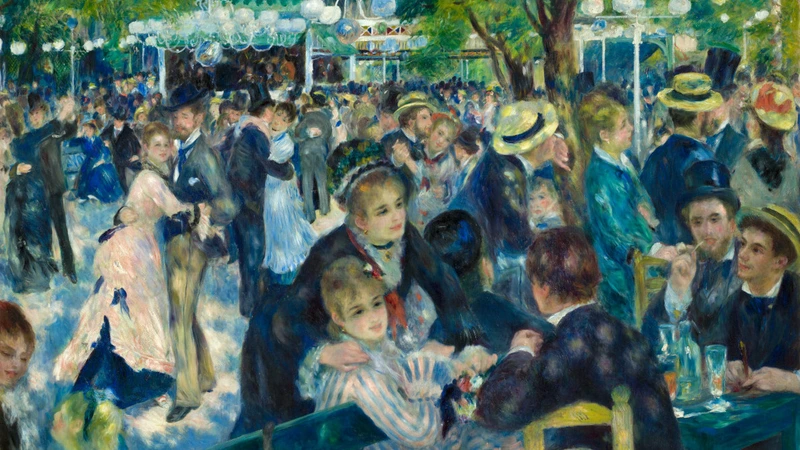
Bal du moulin de la Galette, en 1876
Musée d'Orsay
Legs Gustave Caillebotte, 1894
© Musée d’Orsay, Dist. RMN-Grand Palais / Patrice Schmidt
See the notice of the artwork
These major donations, from artists like Caillebotte and collectors, played a key role and were intended to achieve recognition for works that had, they felt, been unfairly treated by the public acquisitions system. When Édouard Manet died, in 1889, his Olympia, which had caused considerable controversy when shown at the 1865 Salon, remained in the artist’s studio, unsold. At this point, some rich Americans decided to buy some of Manet’s works, including Olympia. With the help of the American artist John Sargent, Monet launched a public subscription scheme to buy the painting from Manet’s widow. In 1890, this resulted in Olympia being gifted to the state. For Monet, it was about finally getting recognition for the considerable place held by the artist in “the history of our century.” An intervention by Monet’s friend George Clemenceau led to the picture being exhibited in the Louvre in 1907.

Olympia, 1863
Musée d'Orsay
Offert à l'Etat par souscription publique sur l'initiative de Claude Monet, 1890
© Musée d’Orsay, Dist. RMN-Grand Palais / Patrice Schmidt
See the notice of the artwork
The rich collector and art historian, Étienne Moreau-Nélaton, a recognized expert on the paintings of Corot, Daubigny, Millet and Manet, acquired works by these artists and other Impressionist masterpieces, and in 1906 he gave the Louvre some hundred pictures, including works from the Romantic movement, Barbizon landscapes and the first foundations of “La Nouvelle Peinture”, or The New Painting, and Impressionism. He is to thank, for example, for the presence of Edouard Manet’s Déjeuner sur l’herbe [The Luncheon on the Grass], a work that he had bought from Durand-Ruel in 1900, after it had been rejected by the Salon jury in 1863, and that of Coquelicots [Poppy Field] by Claude Monet (1873), one of the gems of the group's first exhibition in 1874.
Thanks to his success in business, self-made man Alfred Chauchard was able to earn himself a reputation as an outstanding collector, compiling a unique ensemble of works by such artists as Théodore Rousseau, of the Barbizon school, which had been very much neglected by the state purchasing policy. It was thanks to him that, following a campaign in the international press, L’Angélus (1857-1859) by Jean-François Millet returned to French soil, when he bought the picture back, at great expense, from the American Art Association in 1890. The state accepted his bequest in 1910, thus filling some significant gaps.

L'Angélus, entre 1857 et 1859
Musée d'Orsay
Legs d'Alfred Chauchard, 1909
© Musée d’Orsay, Dist. RMN-Grand Palais / Patrice Schmidt
See the notice of the artwork
In 1911, it was the turn of Isaac de Camondo’s collection to be bequeathed. In addition to 18th century furniture and Japanese prints, it brought a remarkable ensemble of major Impressionist works to the national collections: great artists like Degas and Manet, with, amongst others, Edouard Manet’s Le Fifre [The Fifer] (1866), and Monet too, with Londres, le Parlement [London, Parliament] (1904).
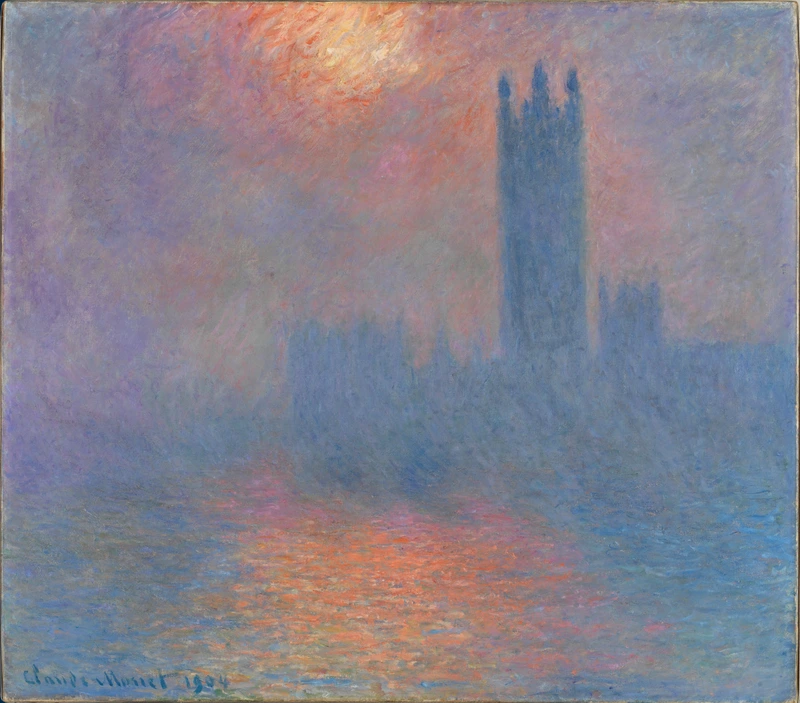
Londres, le Parlement. Trouée de soleil dans le brouillard, en 1904
Musée d'Orsay
Legs du comte Isaac de Camondo, 1911
© Musée d’Orsay, Dist. RMN-Grand Palais / Patrice Schmidt
See the notice of the artwork
He was one of only a very few collectors to understand the artist’s serial approach, buying four of the celebrated Cathédrales de Rouen [Rouen Cathedrals] series. With still only a few works in French national collections at the time, Cézanne was at last allocated a more appropriate position, with, amongst others Les joueurs de cartes [The Cardplayers] (circa 1890-1895), and Van Gogh was finally given a place in the museum with his Fritillaires [Fritillaries] (1887). For those artists who were still alive - Degas, Renoir and Monet - the opening of rooms dedicated specifically to the Camondo collection in 1914 meant that the bequest had finally brought them the supreme accolade of being shown in the Louvre during their own lifetime.
Antonin Personnaz, a great art lover, leading photographer and friend to painters like Pissarro and, in particular, Guillaumin, also bequeathed his collection to the state. It comprised nearly 140 Impressionist paintings, including Monet’s Le Pont d’Argenteuil [The Bridge at Argenteuil] (1874), Pissarro's Paysage à Éragny [Eragny Landscape] (1897), L’île de la grande Jatte [La Grande Jatte Island] (1873). The works Personnaz bequeathed to the Louvre joined its collections after his death in 1937: the Impressionist paintings were divided between the Musée Bonnat in Bayonne, where he was curator, and the Musée d’Orsay (nearly 40 works).
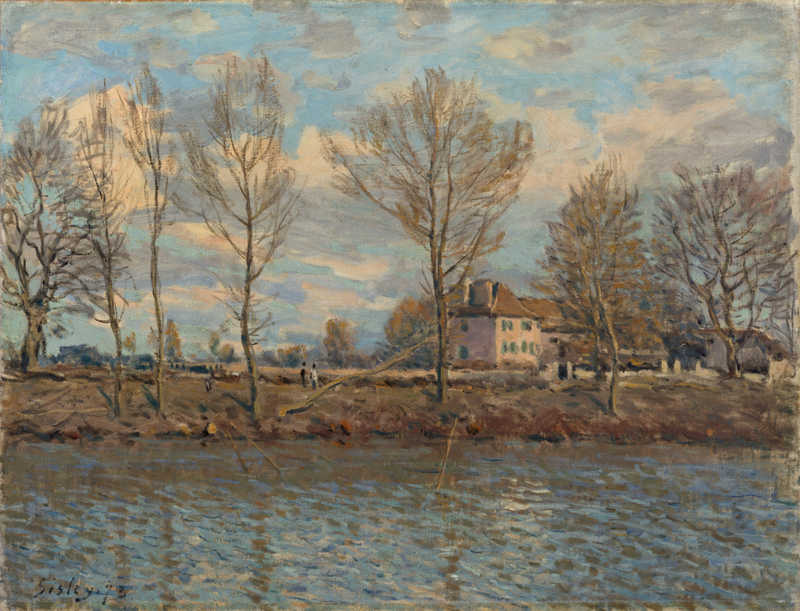
L'île de la Grande Jatte, en 1873
Musée d'Orsay
© RMN-Grand Palais (Musée d’Orsay) / Hervé Lewandowski
See the notice of the artwork
An acquisitions policy that would reflect French artistic diversity
Successive curators of the Musée du Luxembourg - Étienne Arago then Léonce Bénédite - had managed to make acquisitions that bore witness to the development of artistic sensibilities, but by 1892 the French state had yet to acquire a single Impressionist painting. The realization that it was twenty years since the first Impressionist exhibition in London inspired the state to acquire Jeunes filles au piano [Girls at the Piano] by Auguste Renoir, followed by Jeune Fille en toilette de bal [Girl in a Ball Gown] by Berthe Morisot, in 1894. In the 1890s, Impressionist paintings were already fetching very high prices, but, with the help of generous donations, the national collections were enriched with a large number of works, starting with the Caillebotte bequest, accepted in 1895.
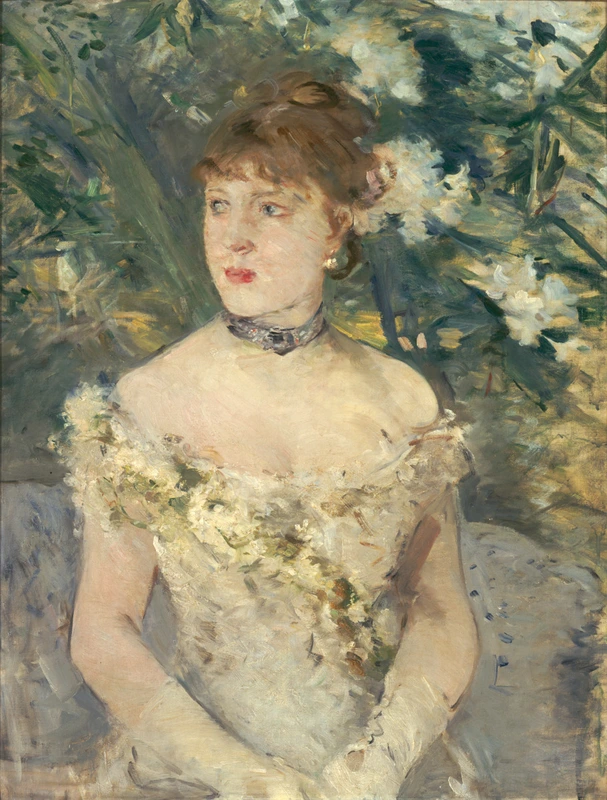
Jeune femme en toilette de bal, en 1879
Musée d'Orsay
Acquisistion de Théodore Duret, 1894
© Musée d’Orsay, Dist. RMN-Grand Palais / Patrice Schmidt
See the notice of the artwork
Other gaps from the preceding period were also filled, as in 1881, for example, when Courbet’s sister gifted his Un Enterrement à Ornans [A Burial at Ornans], (1849). The painting went directly to the Louvre. Other art movements, more sensitive to allegorical subjects, also joined the Musée du Luxembourg’s collections, such as Le Pauvre pêcheur [The Poor Fisherman] by Pierre Puvis de Chavanne, which had caused quite a stir at the 1881 Salon. It was nevertheless purchased by the state in 1887, as was Fantin-Latour's Un atelier aux Batignolles [A Studio at Les Batignolles], (1870), acquired in 1892.
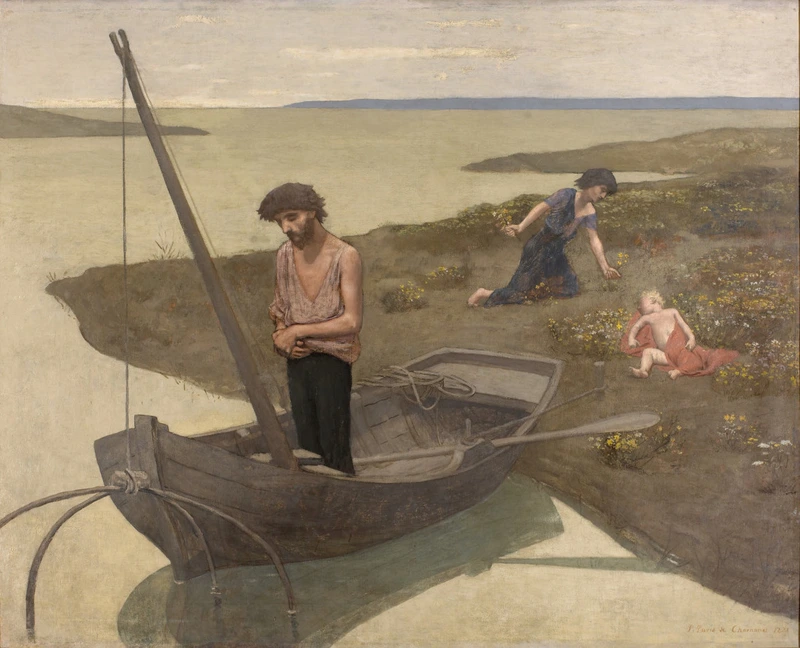
Le pauvre pêcheur, en 1881
Musée d'Orsay
© Musée d’Orsay, Dist. RMN-Grand Palais / Patrice Schmidt
See the notice of the artwork
Naturalism, highly appreciated during the Third Republic, was fully recognized, as proven by the acquisition in 1882 of one of Léon Lhermitte’s most iconic works, La Paye des moissonneurs [Paying the Harvesters].
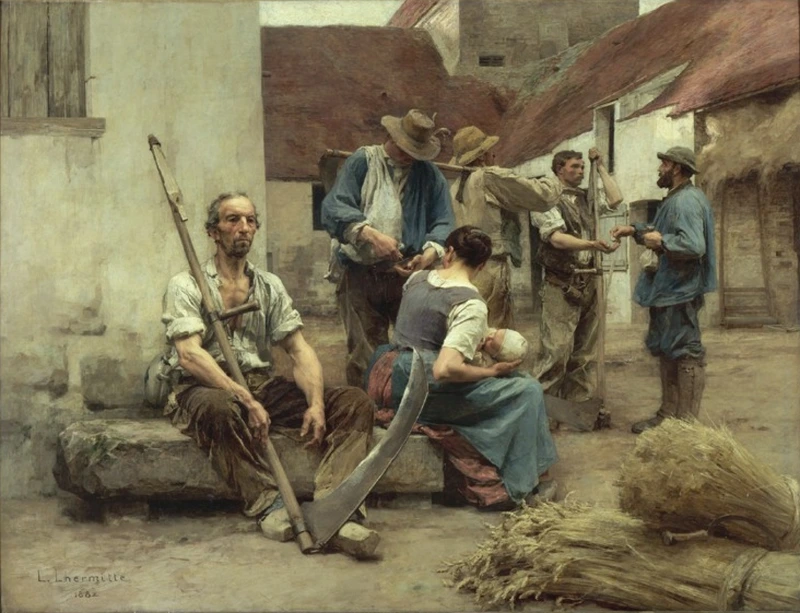
La Paye des moissonneurs, en 1882
Musée d'Orsay
© RMN-Grand Palais (Musée d’Orsay) / Hervé Lewandowski
See the notice of the artwork
Works by Charles Cottet, a member of a group of painters sometimes called “La bande noire”, or the Black Gang, because they had rejected the Impressionists’ bright palette, preferring darker harmonies, were very much appreciated by the Luxembourg’s then curator, Léonce Bénédite. They too joined the national collections therefore, with Cottet’s triptych Au pays de la mer [In the Land of the Sea] being acquired at the 1898 Salon. The Musée du Luxembourg’s purchasing policy was also opened to what was known as “Orientalism”, of which Bénédite was also a great advocate.
The dynamics behind acquisitions of works from foreign art movements
Bénédite felt the Musée du Luxembourg should include the international art movements of its era, as, for him, they demonstrated the wide influence of French art and reaffirmed Paris’s role as capital of the arts. To this end, he traveled abroad, and, for the 1900 Paris Exhibition in particular, compiled a collection of paintings by Belgian (Alfred Stevens, Constantin Meunier), American (Winslow Homer, whose work Nuit d’été [Summer Night] was purchased at the 1900 Exhibition), Scandinavian (Anders Zorn, Frits Thaulow) and - but, for political reasons, to a lesser extent - German artists (Fritz von Uhde).

Nuit d'été, en 1890
Musée d'Orsay
Acq de l'Etat, 1900
© RMN-Grand Palais (Musée d’Orsay) / Hervé Lewandowski
See the notice of the artwork
By 1919, the size of the section dedicated to foreign art movements led him to ask for the collection to be presented in the Jeu de Paume building in the Tuileries Gardens. This request was to be granted in 1922, three years before his death. The works by artists belonging to foreign movements were therefore transferred to the Jeu de Paume, which thus became an annex of the Musée du Luxembourg, before becoming a museum in its own right in1931.
Meanwhile, in 1929, the Impressionist paintings that hung in the Musée du Luxembourg were moved to the Louvre. The transfers provided a temporary solution to the museum’s space issues, which still remained despite the various alterations that had taken place.
The National Museum of Modern Art and the Louvre’s Impressionist and Post-Impressionist collection at the Jeu de Paume
Debates, new museum spaces and the role of the Louvre
Debates about the role of the Musée du Luxembourg that had begun in the 19th century, grew ever more intense at the start of the 20th and during the interwar period. One of the criticisms leveled at the Musée du Luxembourg was that it was more a museum of living artists than a museum of modern art. Which is why, in 1934, the French state decided to create a museum of modern art - to be housed at the Palais de Tokyo, built in 1937 for the Paris International Exhibition of Art and Technology in Modern Life. The collections presented at the Musée du Luxembourg and the works of artists belonging to foreign movements that hung in the Jeu de Paume were transferred to the Palais de Tokyo in 1938.
The Musée du Luxembourg closed for good in 1939, before the German occupation, an event which caused considerable upheaval in the nation’s museums. The occupying army took over the Jeu de Paume, using it to store the works of art it had looted, labeling them as “Jewish goods”. Dismissed by the Vichy regime, Jean Cassou, the curator of the new national museum of modern art, joined the Resistance. Once installed, the ground floor of the museum was inaugurated by the Minister of Education on August 6, 1942, only to close again shortly after and reopen for a few months in 1943.
In 1945, Jean Cassou returned to his role as chief curator at the national museum of modern art and was therefore able to entirely rethink his exhibition layout in preparation for the official opening in1947. That same year, the Impressionist and Post-Impressionist works that had previously been presented at the Louvre were moved to the Jeu de Paume, which became an offshoot of the Louvre.
The collections are enriched with works by major artists
By the time the Impressionist paintings were moved to the Jeu de Paume, in 1947, the collection that had previously hung in the Louvre had already been enriched with what is known as Post-Impressionism - artists like Gauguin and Van Gogh to Seurat and Toulouse-Lautrec - who, from the 1880s onwards, had been simultaneously admiring and contesting Impressionism. These artists had been largely forgotten by the Musée du Luxembourg at the turn of the 20th century, and it was not until the 1920s that they began to be more fully represented. The situation proved favorable to bequests and donations, as these were made to the Louvre, a museum offering unquestionable prestige and guaranteed stability. Thus, for example, Van Gogh’s Le restaurant de la Sirène à Asnières [Restaurant de la Sirène at Asnières], (1886), formed part of a bequest made to the Louvre by Joseph Reinach in 1921. In 1927, the French state accepted a painting by Georges Seurat, Le Cirque [The Circus] (1891), bequeathed by the American, John Quinn, then, in 1930, it also accepted l’Étude pour “Un dimanche après-midi à l’île de la Grande Jatte” [Study for "A Sunday Afternoon on La Grande Jatte"] (1884 - 1886) by the same artist, from an anonymous donor.
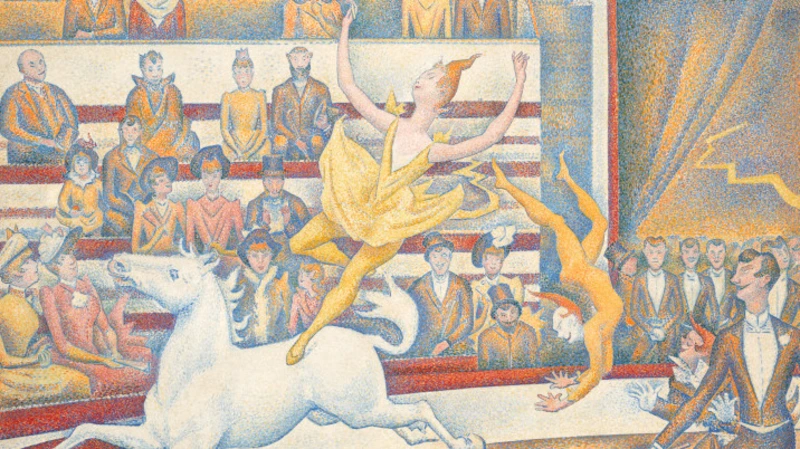
Le cirque (détail), 1891
Musée d'Orsay
Legs John Quinn, 1927
© Musée d’Orsay, Dist. RMN-Grand Palais / Patrice Schmidt
See the notice of the artwork
Another aspect of Post-Impressionism was offered during this period, when works by Paul Gauguin joined the collections, including La Belle Angèle [The Beautiful Angel] (1889), the subject of a gift from Ambroise Vollard in 1927, and Le Cheval Blanc [The White Horse] (1898), acquired in 1927.
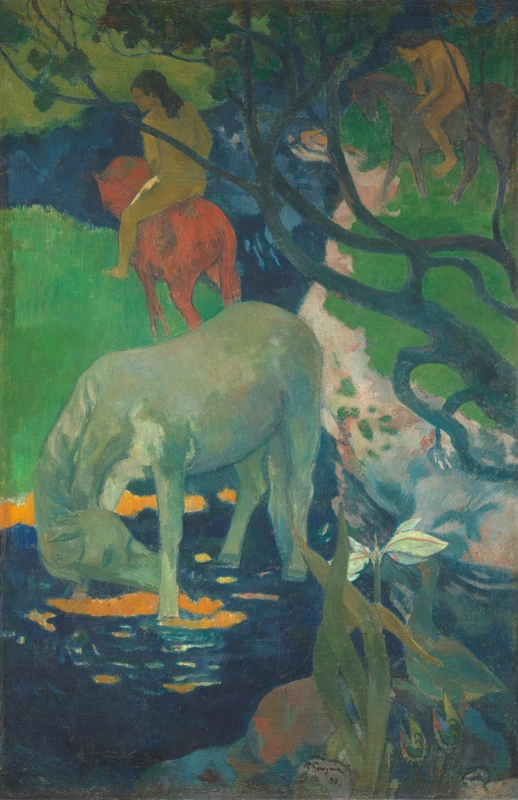
Le cheval blanc, 1898
Musée d'Orsay
Achat, 1927
© RMN-Grand Palais (Musée d’Orsay) / RMN
See the notice of the artwork
The enrichment of the Louvre’s Post-Impressionist collection continued after the move to the Jeu de Paume, with the aim of filling its gaps. Three female nudes by Seurat were acquired in 1947 at the second sale of the Félix Fénéon collection. This catching up took place in the context of the recognition given to the artist by leading collectors and international establishments, such as the Art Institute of Chicago, which, in 1926, was gifted Un après-midi à la Grande Jatte [A Sunday Afternoon on La Grande Jatte] (1884-1886), London’s Courtauld Institute (Jeune femme se poudrant [Young Woman Powdering Herself], 1932), and the American billionaire Albert Barnes, who bought Les Poseuses [The Models] (1888) in 1926.
During the ’40s and ’50s, many works by Van Gogh were donated, finally reinforcing the artist’s presence in the national collections. Many of them were made by Paul and Marguerite Gachet, for example Portrait de l’artiste [Portait of the Artist] (1889), donated in 1949.
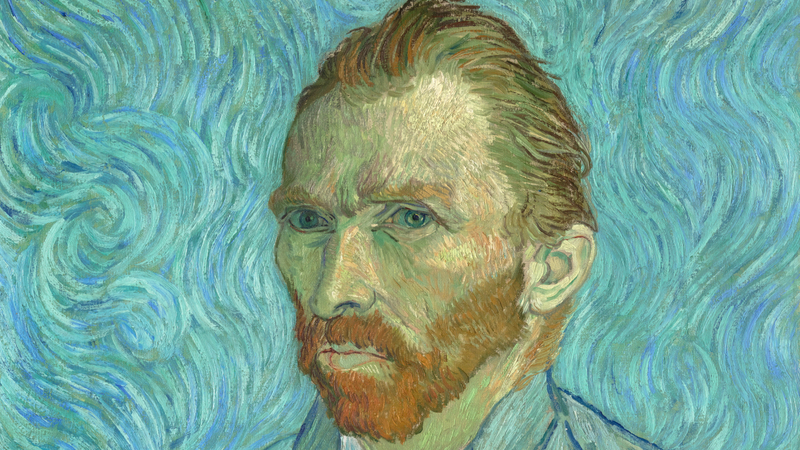
Portrait de l'artiste (détail), en 1889
Musée d'Orsay
Don Paul et Marguerite Gachet, 1949
© Musée d’Orsay, Dist. RMN-Grand Palais / Patrice Schmidt
See the notice of the artwork
Acquisitions of works by Paul Cézanne, made by the Musée du Luxembourg thanks to bequests by first Caillebotte and then Isaac de Camondo, were followed by several more acquisitions, including two still lifes from a bequest made to the Louvre by Auguste Pellerin, one of the leading collectors of his work, and another, of Baigneurs [Bathers] (around 1890-1900), gift of Eva Gebhard-Gourgaud in 1965. In 1941, works by the artist Odilon Redon, one of whose paintings, Les yeux clos [Closed Eyes] (1890), had already been acquired for the Musée du Luxembourg in 1904, enriched the collection thanks to a number of bequests, including one from Paul Jamot, painter, art critic, collector and curator at the Musée du Louvre.
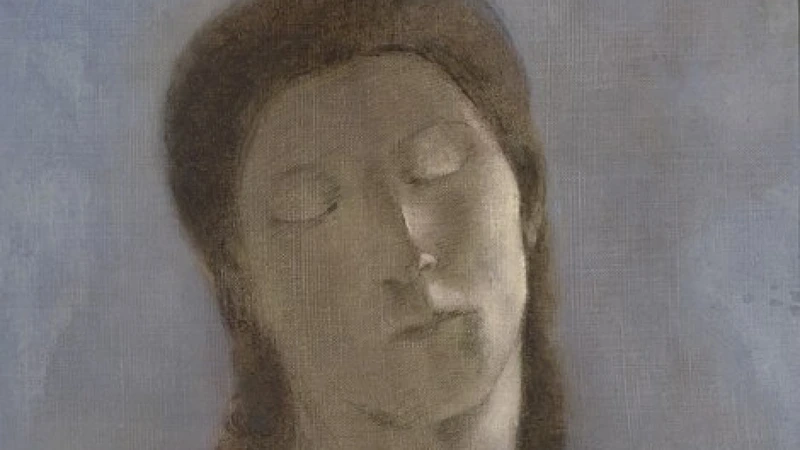
Les yeux clos, en 1890
Musée d'Orsay
acquis de l'atiste par l'Etat pour le Luxembourg,1904
© RMN-Grand Palais (Musée d’Orsay) / Hervé Lewandowski
See the notice of the artwork
Towards a Musée d’Orsay
In the late ’60s it became clear that the Jeu de Paume building was too small to present the collection of Impressionist and Post-Impressionist works in suitable conditions. People were also beginning to see and study the 19th century differently: hitherto neglected or even despised works, artists and artistic sensibilities were being rediscovered, for example works that might go under the headings of Academism or Symbolism. In 1972, the French Museums Director, Jean Châtelain, put forward the idea of taking over the Orsay hotel and railway station, built by Victor Laloux in 1900. Four years later, the Palais de Tokyo national museum of modern art was closed and its collections moved to the Centre National d’Art et de Culture Georges Pompidou, or Centre Pompidou, a new arts center planned since 1970. In 1977, a small interministerial committee, presided by Valéry Giscard d’Estaing, decided to create a museum of 19th century art and civilization in the former Orsay railway station. Preparations therefore began to transfer more works, this time from the reserve collections at the Palais de Tokyo and the Jeu de Paume, to the future Musée d’Orsay, which would provide a richer, more comprehensive version of the painting of the second half of the 19th century and the turn of the 20th.
The Acquisitions Policy of the Musée d’Orsay
In 1978, the prefiguration team responsible for planning the future Musée d’Orsay began to build the collection. To this end, the first step was to request the return of loaned pictures that had been scattered throughout France when the Musée du Luxembourg closed - this sometimes involved an exchange of works, to avoid undermining the museums that had housed them for many long years.
The works returned reinforced the Realist painting of 1848-1850, the end of Romanticism, the eclecticism of the Second Empire, Academism and Naturalism.

Le Talisman, l'Aven au Bois d'Amour, en 1888
Musée d'Orsay
Acquis avec le concours de M. Philipe Meyer, par l'intermédiaire de la Fondation Lutèce, 1985
© Musée d’Orsay, Dist. RMN-Grand Palais / Patrice Schmidt
See the notice of the artwork
In 1978, this same team was to draft an acquisitions policy for the museum. The main aim was to round out, balance and strengthen the collections it had inherited, in order to represent the period from 1848 to 1914 - a particularly fertile era in the history of art - as comprehensively as possible. For example, in 1985, the museum acquired Le Talisman [The Talisman] by Sérusier, thus adding to a series of prestigious gifts of works by Bonnard and Redon. The museum’s various series of Neo-Impressionist paintings and works representing the Pont-Aven school are testimony to the generosity of the descendants of the artists and the great collectors.
Moreover, right from the start the Musée d'Orsay benefited from the Acceptance in Lieu mechanism, which allows people to pay their Inheritance Tax by transferring ownership of one or more works. Over the years, pictures by some of the greatest artists have been added to the collections in this way. Altogether, the mechanism has allowed around one hundred pictures and pastels to join the museum’s collections since it was first created.
Amongst them are works by Courbet, including the iconic Origine du monde [The Origin of the World] (1995); five large-scale canvases by Bouguereau (2010), le Portrait de Marcel Proust by Blanche (1989); a dozen works by Cézanne, including several Bathers, La Tentation de Saint Antoine [The Temptation of Saint Anthony] (1982), L'Avocat [The Lawyer] (1991); works by Pissarro, with Coteau de l'Hermitage, Pontoise [The Hermitage at Pontoise] (1983), a few works by Manet, including Combat de taureaux [Bullfight] (1976), L'évasion de Rochefort [Rochefort’s Escape] (1984); some pictures by Renoir, with Danse à la ville [City Dance] (1978), Julie Manet (1999), Le poirier d'Angleterre [The English Pear Tree] (2012), and also several pictures by Degas, including two of his pastels of dancers, Danseuses (1979 and 1997); paintings by Monet, including La rue Montorgueil (1982), Le déjeuner sur l'herbe [The Luncheon on the Grass] (1987), Effet de vent [Wind Effect] (2002); as well as, more recently, works by Caillebotte, with Paysage à Argenteuil [Landscape at Argenteuil] (2019); a dozen works by Bonnard, including all four Femmes au jardin [Women in the Garden] (1984), L'après-midi bourgeoise [The Bourgeois Afternoon] (1988), and Fenêtre ouverte [The Open Window] (2020); as well as by Vuillard with Femme de profil [Woman in Profile] (1990), Chez Maurice Denis [The Home of Maurice Denis] (2001), Autoportrait Octogonal [Octagonal Self Portrait] (2015), Jean Giraudoux (2015); by Denis, Le menuet de la Princesse Maleine [Princess Maleine's Minuet] (1999), Paysage aux arbres verts [Landscape with Green Trees] (2001); works by Redon, such as Le char d’Apollon [The Chariot of Apollo] (1978) and the set of 15 decorative panels painted for Baron Robert de Domecy’s dining-room (1988) by Signac, with Les Andelys (1996), by Matisse, Luxe, calme et volupté [Luxury, Peace and Pleasure] (1982), and so on.
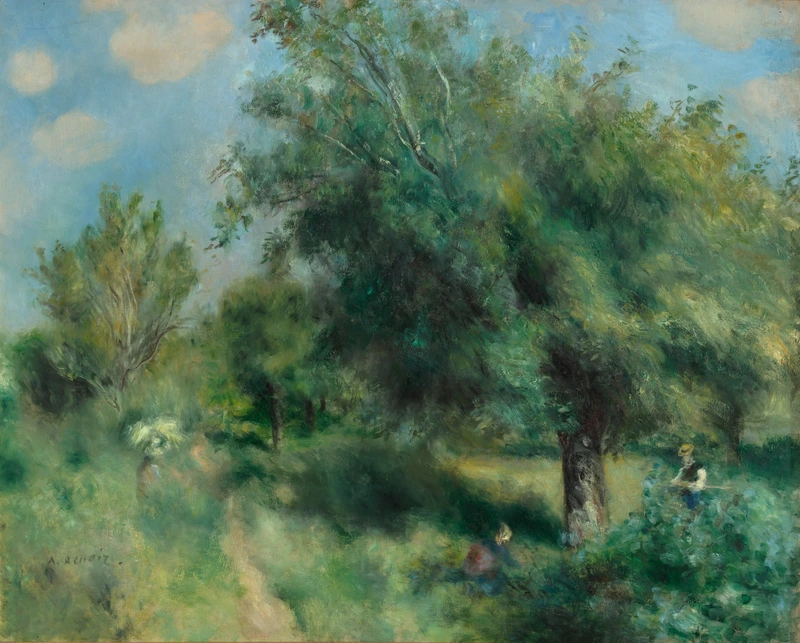
Le Poirier d'Angleterre ou Le Verger à Louveciennes, vers 1873
Musée d'Orsay
© Musée d’Orsay, Dist. RMN-Grand Palais / Patrice Schmidt
See the notice of the artwork
With regard to purchases, there has been a particular focus on representing foreign art movements, with The Wheel of Fortune by Burne-Jones (1980), Summer Night in Aagaardstrand by Munch (1986), Going Fishing by Mondrian (1987), Haystacks III by the same artist (2018), Rest by Hammershoi (1996). It also led to the purchase of Au conservatoire [At the Academy] by Ensor (2009), filling a gap in the collections, Expulsion from Paradise by Von Stuck (2012), and À l’Harmonie (Jardin public) [To Harmony (Park)] by Georges Morren (2019), The Great Black Woodpeckerby Akseli Gallen-Kallela (2020), and Garçon breton de profil [Breton Boy in Profile] by Roderic O’Conor (2021).
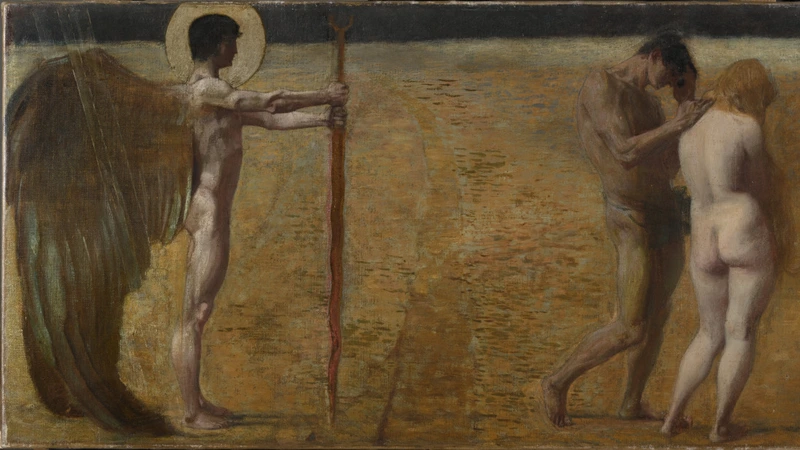
L'Expulsion du Paradis, vers 1890
Musée d'Orsay
Achat, 2012
© Musée d’Orsay, Dist. RMN-Grand Palais / Patrice Schmidt
See the notice of the artwork
From the ’80s onwards, Swiss painting became one of the key areas to enrich the so-called “foreign” sections at the Musée d’Orsay, a policy that brought about the spectacular purchase, just a few months after the museum opened in December 1986, of an important landscape by Hodler, Andey Peak. There followed the acquisition of masterpieces by Giovanni Giacometti, including View of Capolago (1997) and Cuno Amiet, with Snowy Landscape (1999), and also three portraits by Hodler, including one of Mathias Morhardt and Portrait du jeune Werner Miller [Portrait of Werner Miller], both of which were acquired in 2018. This artist, who was the leading protagonist of Swiss Modernism, has a special place in the collections of the Musée d’Orsay, which has five of his paintings and is in fact the only establishment in France to hold any of this master’s works.
Since 1986, the Musée d'Orsay has also been able to purchase works by some of the greatest French painters of its period. These include, to name but a few: Renoir’s Le garçon au chat [Boy With Cat] (1992); Gaugin’s Portrait de l'artiste au Christ jaune [Self Portrait with the Yellow Christ] (1994); Berthe Morisot au bouquet de violettes [Berthe Morisot with a Bouquet of Violets] by Manet (1998); Galatée [Galatea] by Gustave Moreau (1997); Portrait de Paul Ranson en costume nabi [Portrait of Paul Ranson in Nabi Costume] by Sérusier (2004); and a remarkable group portrait by Tissot, Le Cercle de la rue Royale [The Circle of the Rue Royale] (2011). In recent years, the Musée d’Orsay further strengthened its position as a benchmark in the field of Post-Impressionism when it acquired both Le Pardon [The Pardon] by Émile Bernard (2019), one of the pioneers of Synthetism, through the National Treasures mechanism, and Christ vert [The Green Christ] by Maurice Denis (2020), one of the artist’s most radical works, as also Tétraèdres [Tetrahedrons] by Paul Sérusier, which takes Symbolism into the realms of Abstraction.

Le Cercle de la rue Royale, en 1868
Musée d'Orsay
© Musée d’Orsay, Dist. RMN-Grand Palais / Patrice Schmidt
See the notice of the artwork
Lastly, the numerous gifts made to the Musée d'Orsay remain one of the collections’ chief sources of enrichment. Every year, major works are acquired thanks to the various gifts, donations and bequests.
Financial support from Georges D. Havas helped to fund the purchase of L'Enfance de Sixte-Quint [Childhood of Sixtus V] by Gustave Moreau (2009) and Portrait d'Yvonne Lerolle en trois aspects [Portrait of Yvonne Lerolle in three views] by Maurice Denis (2010). For the purchase of this portrait - a key milestone in the history of Symbolism - the Musée d'Orsay was also able to draw on sums leftover from an anonymous Canadian donation and support from the French Heritage Fund. Let us also mention the splendid example of the Meyer donation, which became available in 2007 on the death of Philippe Meyer, and in a dedicated space now features pictures by Bonnard, Vuillard, Cézanne, Seurat, Degas, Fantin-Latour, Monet, Manet, Hammershoi and Mondrian. A further addition to this ensemble was made in 2009 when the Meyer Foundation gifted Bonnard’s La symphonie pastorale [Pastoral Symphony], currently on loan to the Musée du Cannet.
In 2010, another remarkable donation was made by Zeineb and Jean-Pierre Marcie-Rivière, which became available when Jean-Pierre Marcie-Rivière died, in 2016. This major donation comprises 141 Nabi works, including 25 paintings and 94 drawings by Bonnard, and 24 paintings, 3 pastels and 2 drawings by Vuillard. Started in the 1960s by André Levy-Despas, Zeineb Kebaïli’s first husband, the collection was enriched over more than forty years by Zeineb and Jean-Pierre Marcie-Rivière. This incredibly generous act comprehensively reaffirmed the Musée d’Orsay’s benchmark role with reference to artists like Vuillard and Bonnard.
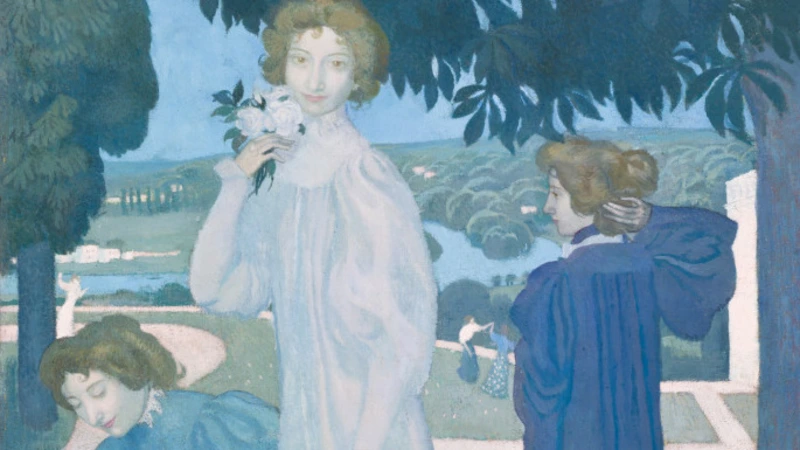
Portrait d'Yvonne Lerolle en trois aspects, 1897
Musée d'Orsay
Achat avec la participation de George D. Havas, en souvenir de Léo Havas, Robert et Rose Havas, du Fonds du Patrimoine et des arrérages d'une donation anonyme canadienne, 2010
© Musée d’Orsay, Dist. RMN-Grand Palais / Patrice Schmidt
See the notice of the artwork
Far from being frozen in the legacy handed down by the Musée du Luxembourg, the Musée national d’art moderne, and the Louvre, the Musée d'Orsay’s collections of paintings can be seen to be constantly evolving. Year upon year, gifts, donations and purchases help to keep the collections alive, adapting acquisitions as our knowledge and historiography of art grow.
Visitors are thus able to enjoy an increasingly comprehensive, continually renewed image of an effervescent and varied era - one of the most creative in the entire history of art.
